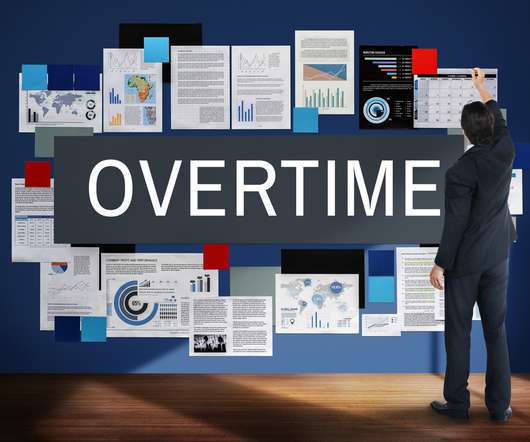Is Paying Your Employees Overtime Mandatory?
Abel HR
JULY 16, 2020
In this blog’s infancy, we discussed a question that comes up regularly as we talk to clients, which is, do I have to pay my employees overtime? In general, whether a person is eligible for overtime is decided by the Fair Labor Standards Act (FLSA). So let’s break it down: Who is eligible for overtime?











Let's personalize your content